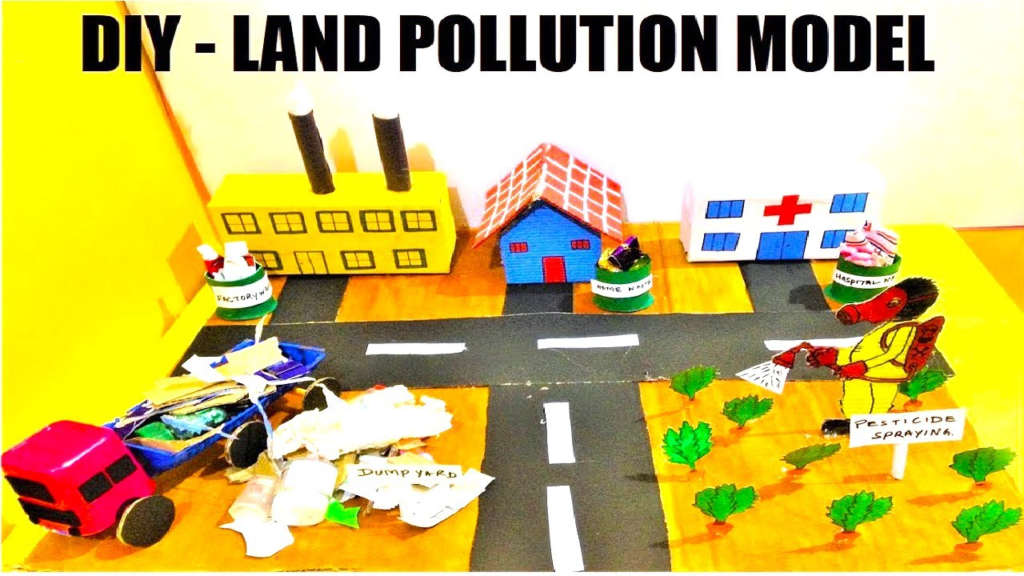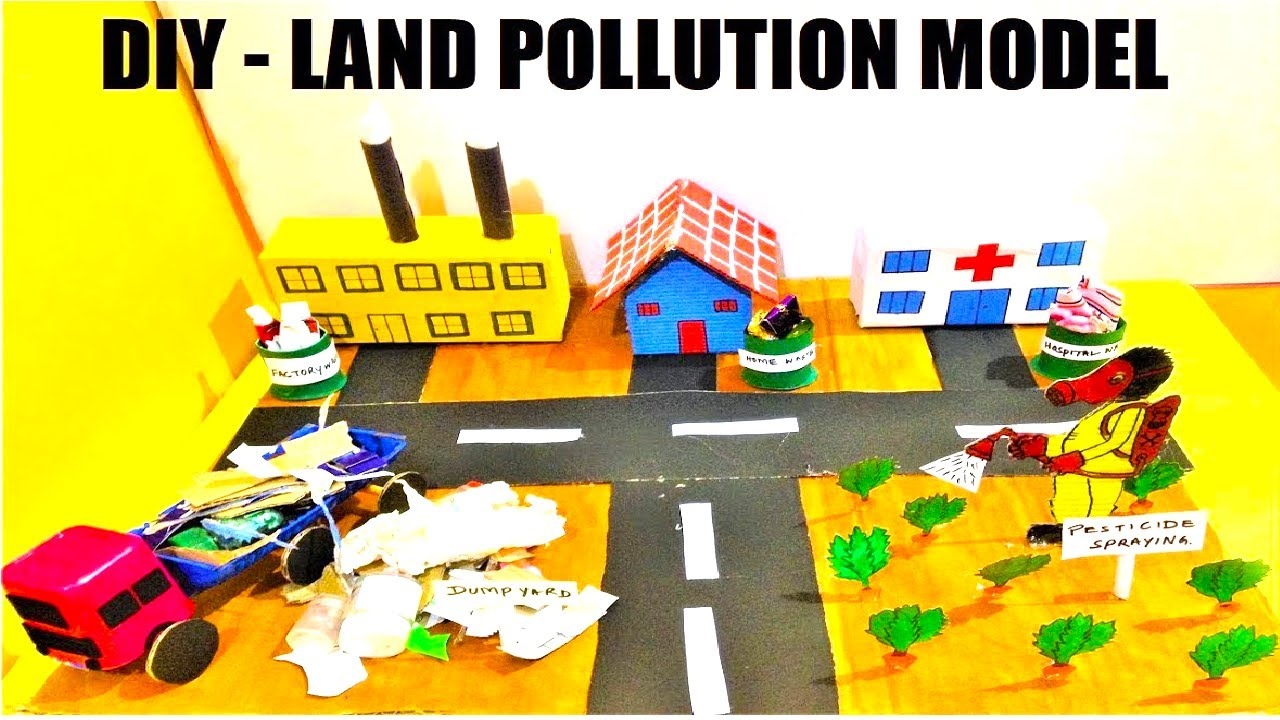Creating a land pollution model using cardboard and waste materials is a fun and educational project that raises awareness about the causes and effects of land pollution. Here’s a step-by-step guide to making this model:

Materials Needed
- Cardboard (for the base and structures)
- Waste materials:
- Plastic wrappers, straws, and bottle caps (to represent non-biodegradable waste)
- Small paper pieces or cartons (to show household garbage)
- Old newspapers (for land coverage or deforestation)
- Leftover paint or markers (for coloring and labeling)
- Glue or tape
- Miniature toys or figurines (optional, for added realism)
- Colored paper or fabric scraps (for decoration)
- Natural items: Twigs, leaves, or soil (to show unpolluted land or forests)
Steps to Make the Model
1. Prepare the Base
- Cut a large piece of cardboard to serve as the base. Divide it into sections to depict different areas such as urban areas, agricultural land, and forests.
2. Create Pollution Sources
- Urban Area: Use small cardboard boxes or cartons to create houses. Add waste like plastic wrappers, paper bits, and bottle caps around these houses to show improper waste disposal.
- Industrial Area: Make a factory using small cardboard boxes. Use colored straws or tubes to simulate chimneys releasing waste. Scatter plastic and foil around to represent industrial waste.
- Agricultural Land: Use soil or sand to create a farm. Sprinkle powder (flour or chalk) to simulate chemical fertilizers and pesticides.
3. Deforestation Area
- Leave a part of the model bare with twigs and cut-out tree stumps made of paper or cardboard to represent deforestation.
4. Show Solutions
- Create small dustbins from bottle caps or paper cones and label them for waste segregation (e.g., biodegradable and non-biodegradable).
- Add small cardboard cutouts of trees and place them in the deforested area to represent reforestation efforts.
5. Add Labels
- Use colored paper or markers to label different sections: “Household Waste,” “Industrial Pollution,” “Deforestation,” “Reforestation,” etc.

